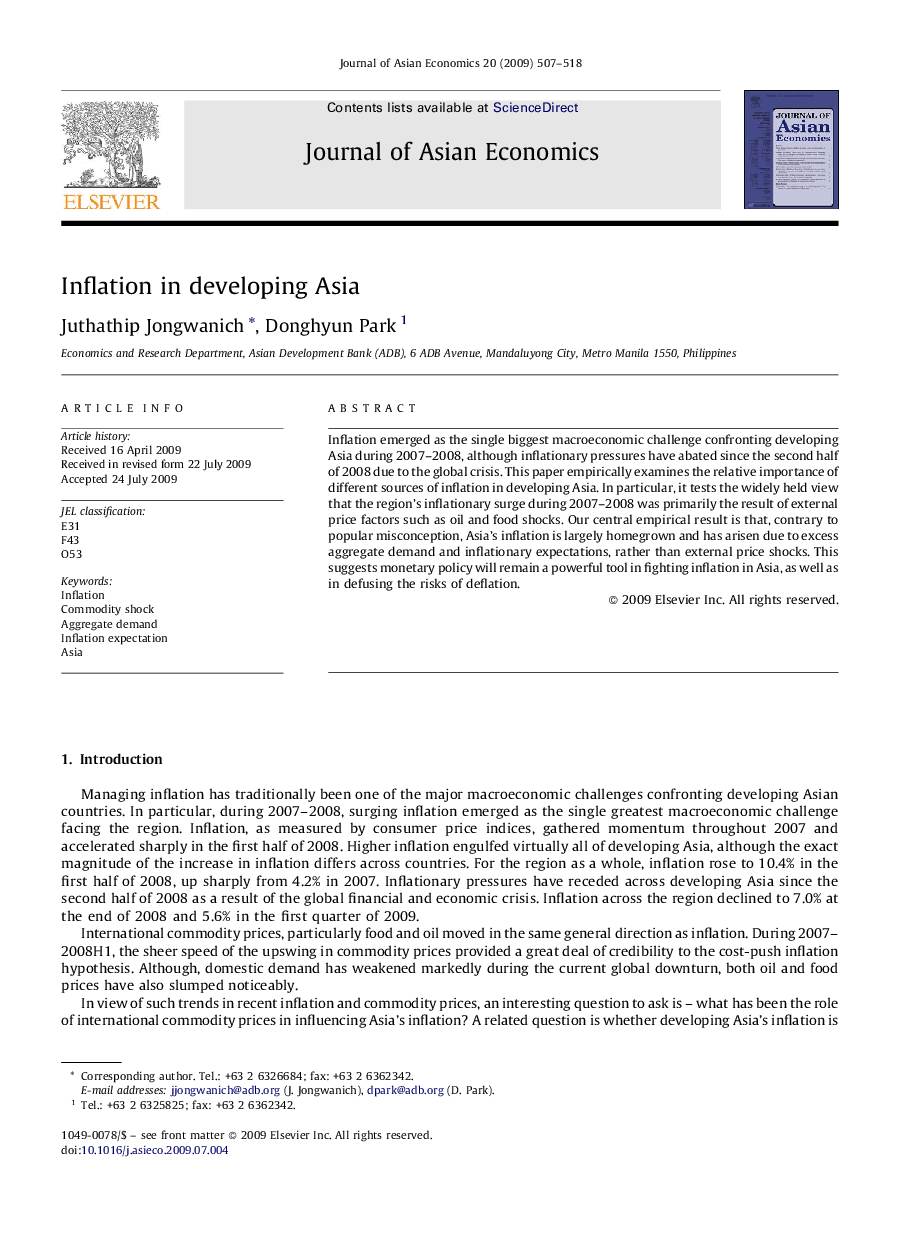| کد مقاله | کد نشریه | سال انتشار | مقاله انگلیسی | نسخه تمام متن |
|---|---|---|---|---|
| 5087678 | 1375448 | 2009 | 12 صفحه PDF | دانلود رایگان |

Inflation emerged as the single biggest macroeconomic challenge confronting developing Asia during 2007-2008, although inflationary pressures have abated since the second half of 2008 due to the global crisis. This paper empirically examines the relative importance of different sources of inflation in developing Asia. In particular, it tests the widely held view that the region's inflationary surge during 2007-2008 was primarily the result of external price factors such as oil and food shocks. Our central empirical result is that, contrary to popular misconception, Asia's inflation is largely homegrown and has arisen due to excess aggregate demand and inflationary expectations, rather than external price shocks. This suggests monetary policy will remain a powerful tool in fighting inflation in Asia, as well as in defusing the risks of deflation.
Journal: Journal of Asian Economics - Volume 20, Issue 5, September 2009, Pages 507-518